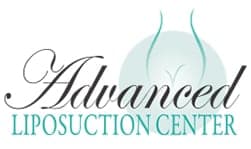One of the inevitable signs of aging that we hear clients complain about at Advanced Liposuction Center is sagging skin. It is just part of the process of getting older that skin, over time, loses its elasticity. In addition, there are other factors that can contribute to or increase loose skin. These include:
- Tanning
- Weight loss
- Genetics
You Have Options
You may have already tried exercise to increase firmness and get rid of the loose skin look. While exercise can help tone muscles and improve appearance, it cannot get rid of excess skin or bring back the youthful look of taut skin. Fortunately, we offer several procedures that can.
Your first step is to decide which parts of your body you most want to improve. We offer a free consultation at all nine of our Pittsburgh area offices where you can meet with one of our expert cosmetic surgeons and discuss your goals. The doctor will explain your options and help you create a plan that will best meet your goals. In some cases, multiple procedures can be done at the same time. A few options we offer include:
Brachioplasty—this arm lift surgery gets rid of those annoying “bat wings” that never seem to decrease no matter how many arm exercises you do. Not only are many patients unhappy with look of loose skin hanging from the upper arms, it can also become irritated from clothing, causing a rash and redness. Brachioplasty removes excess fat, and then pulls the skin downward to tighten it on the arm. Firm upper arms and only a tiny scar in the armpit remain after the procedure.
Facelift—a minimally invasive treatment that restores a youthful facial appearance is our Silhouette Facelift (or thread lifting). This FDA approved technique is an alternative to the traditional facelift. It encompasses permanent silhouette sutures with small, absorbable cones to reposition and lift facial tissues. This procedure provides excellent results that last for up to 5 years, at which time you can revisit our office for a touch up.
Mini tummy tuck—this is a less invasive version of a full tummy tuck. It does not require belly button repositioning and has a shorter recovery period and less scarring. One advantage of the mini tummy tuck is that you can harvest excess fat from this area and use it to plump other areas where sagging skin has taken a toll such as your neck, forehead, cheeks or hands.
Ablative laser resurfacing
The term “laser peeling” also applies to this operation. Because the topmost layer of old skin is removed, it is comparable to a chemical peel. The layers below the top layer are likewise warmed by the laser. Collagen formation is encouraged by this heat.
Ultrasound skin tightening
Heat is applied during this treatment to promote collagen formation. Deeper layers of the skin are heated by focused ultrasonic energy that passes through the skin’s outer layer.
Radiofrequency Procedures
This is an additional safe energy transfer method that warms the skin to encourage the creation of collagen. This approach concentrates on the epidermis of the skin.
How do treatments for facial sagging differ from those for body sagging?
Treatments for facial sagging and body sagging often differ due to variations in skin thickness, underlying structures, and the aesthetic goals for each area. Here are key differences:
Facial Sagging:
- Skin Thickness: Facial skin is generally thinner and more delicate than body skin, requiring specialized approaches.
- Underlying Structures: Facial sagging may involve changes in the fat pads, muscles, and collagen structure. Treatments often focus on restoring volume and promoting collagen production.
- Common Treatments: Facelifts, dermal fillers, Botox injections, and non-invasive procedures like radiofrequency or laser therapy are common for facial sagging.
- Precision: Facial treatments require a high level of precision to maintain natural expressions and avoid an overly tightened appearance.
Body Sagging:
- Skin Thickness: The skin on the body is generally thicker and may have more elasticity than facial skin.
- Underlying Structures: Body sagging often involves larger areas, and treatments may address issues like weakened muscles, excess skin, and localized fat deposits.
- Extent of Treatment: Body sagging treatments may involve more extensive procedures to address larger surface areas and achieve comprehensive results.
Can genetics influence the likelihood of developing sagging skin, and is it preventable?
Genetics can play a role in the likelihood of developing sagging skin. The genetic factors influencing skin elasticity and aging include collagen and elastin production, as well as the natural rate at which the skin ages. While genetics contribute to the baseline characteristics of the skin, lifestyle factors and environmental influences also play significant roles.
Genetic Factors:
- Collagen and Elastin Production: Genes influence the production of collagen and elastin, which are essential proteins for maintaining skin elasticity and firmness.
- Skin Thickness: The thickness of the skin is partly determined by genetics, and thinner skin may be more prone to sagging.
If you would like to learn more about any of these or any of our other face or body treatments, contact us by calling: 724-683-7581.
